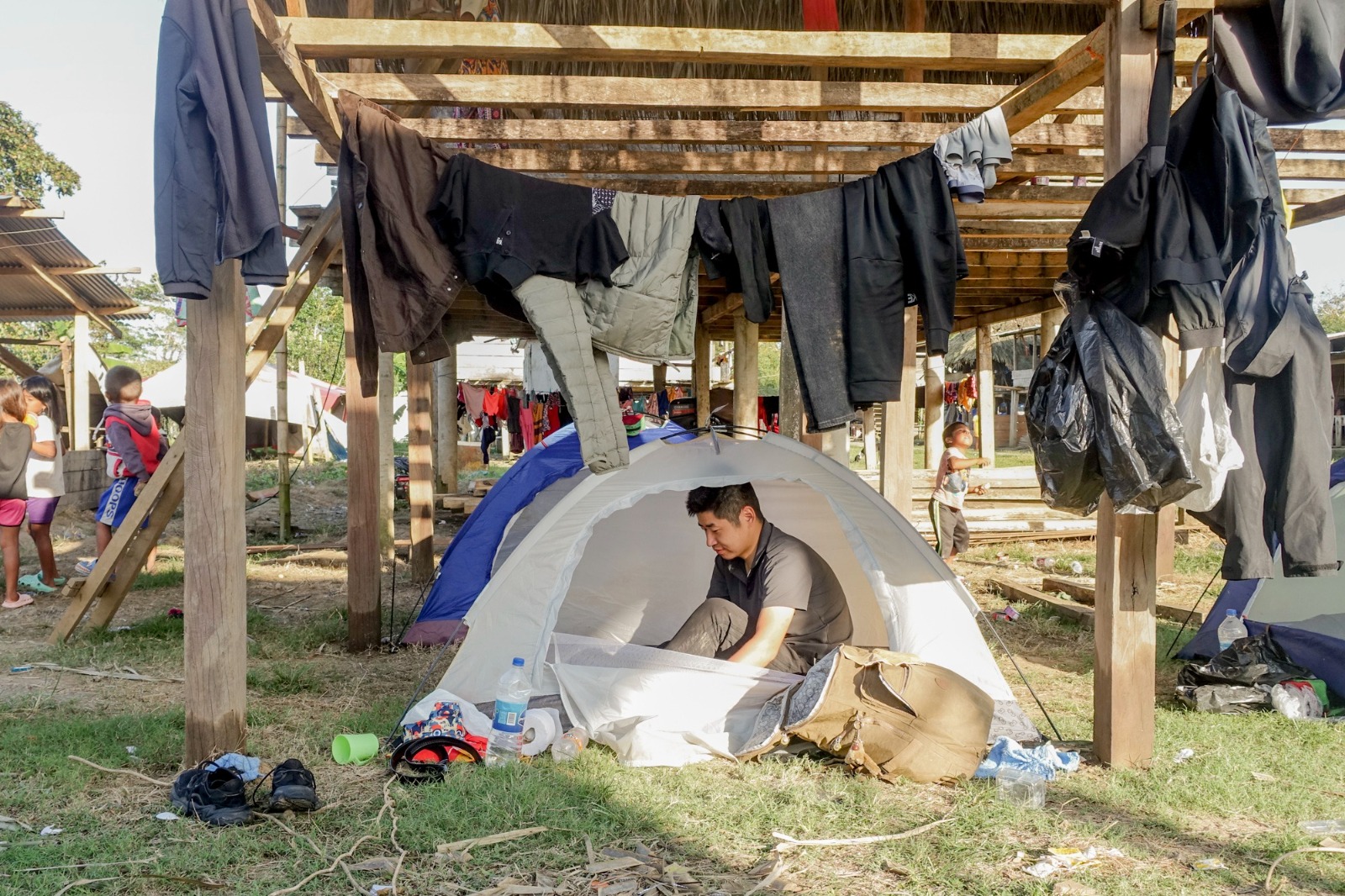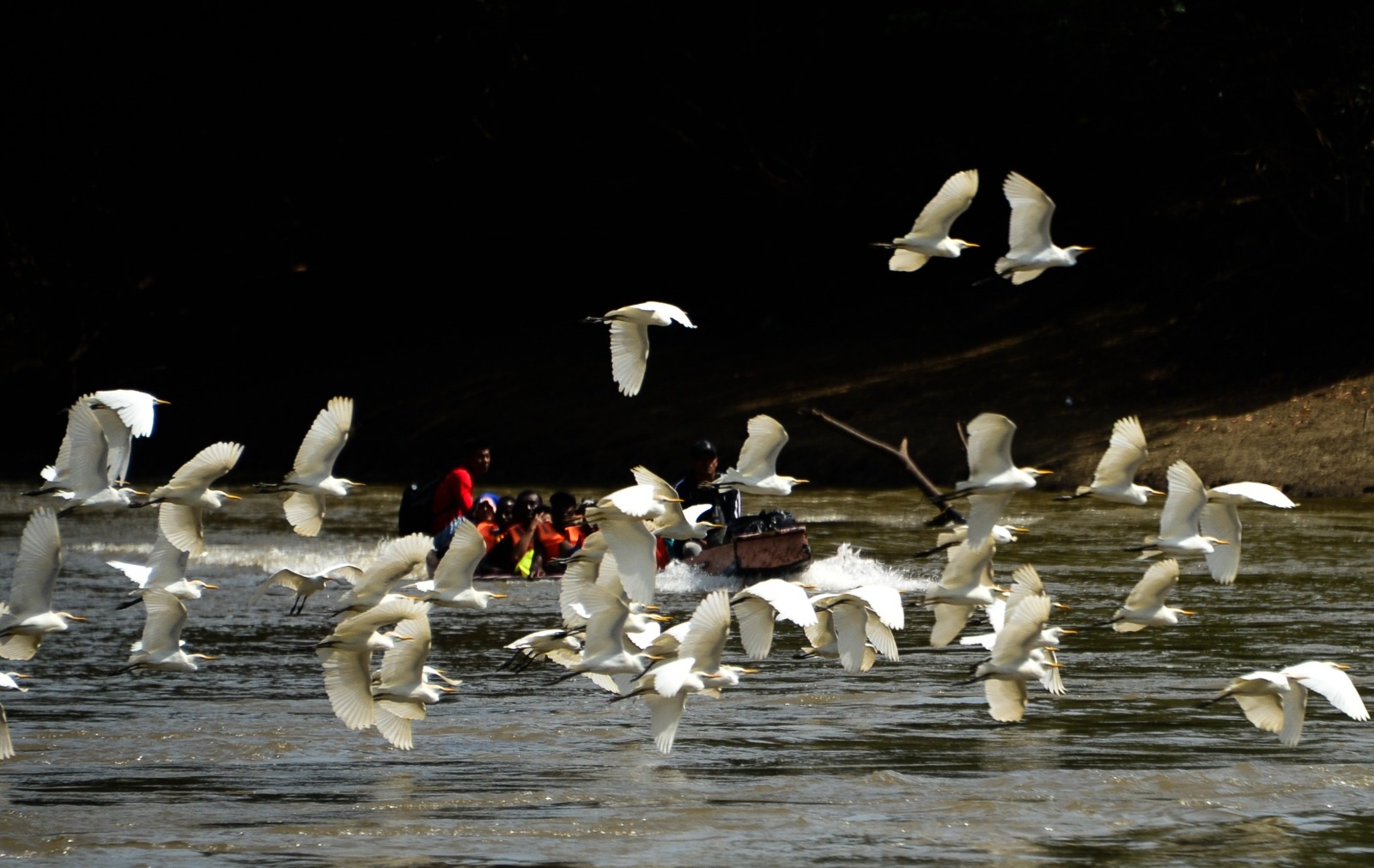DARIÉN GAP, Panama—On a muggy Tuesday morning, migrants from around the world pack into motorized canoes to be transported out of the Darién Gap. The mountainous, swamp-filled jungle separates Colombia and Panama at the base of Central America and is considered one of the most dangerous regions in the world. The 66-mile stretch has no roads or trails. Bandits roam the region robbing, and sometimes raping, migrants. Venomous snakes abound. The bodies of those who’ve died trying to cross are often left behind, food for wild animals.
But over the past year, migrants and asylum seekers from more than 60 countries—from China to Afghanistan, Egypt to Mali—have passed through the Darién Gap en route to the United States.
Videos by VICE
Migrants from many parts of the world struggle to obtain visas that would allow them to fly to the U.S., or any country nearby. So they are taking the only route available: Flying to South America, where countries like Brazil and Ecuador have relatively loose entry requirements. Then they join thousands of other migrants making their way north, country by country—by foot, car, bus, boat, and horseback.
First, they have to brave the Darién Gap. Last year, the number of migrants crossing the jungle soared to 248,000.
Reporter Emily Green and photographer Roman Dibulet visited the Darién Gap migrant camps in January. They found upwards of 800 migrants arriving daily, putting this year on pace to set a new record. More migrants now cross the Darién Gap than the Mediterranean Sea.
Western Union is a lifeline for migrants crossing the Darién Gap. This location, in one of the government-run camps, allows migrants to collect cash sent by family members, minus the 15 percent fee.

Chinese migrants are the latest nationality to pass through the Darién in significant numbers. They started appearing in big groups at the end of 2022, after President Xi Jinping dropped his “zero Covid” policy and began allowing residents to freely travel out of the country.

In January, 913 Chinese migrants crossed the Darién. Many of them were inspired by videos on YouTube and Douyin—TikTok’s domestic Chinese version—explaining how to get to the U.S. via the Darién Gap, followed by a Telegram username to contact for information.

Afghans are also crossing the Darién Gap for the first time. From October through January, 1,817 passed through the Darién en route to the U.S., compared to zero in 2020. Afghan Colonel Mohammad Ahmadi was one of them.

Migrants from India and Pakistan, also now a regular presence in the Darién Gap, crowd onto a motorized canoe, below, to be transported out of the jungle.

An unprecedented number of children are crossing the Darién Gap with their parents. Here, a child reaches a Panamanian government camp in Lajas Blancas after trekking through the Darién.

Over the years, hundreds, if not thousands, of migrants are believed to have perished in the mud and mountains of the Darién—no one knows exactly how many. Below, a woman cries after she was separated from family members while trekking through the Darién.

Injury or sickness can be a death sentence. “Even if you want to help the person, you cannot,” said Harun Said, a 17-year-old from Somalia who crossed the Darién in January. “Because while you are helping [the smuggler] will go and you don’t know the road. It’s not that you are merciless but you don’t have a choice.”

As the numbers of migrants arriving has soared, smugglers have been advertising new routes that require less walking by circumventing parts of the jungle via sea and even horseback. The less walking, the safer the journey, but the more money migrants have to pay smugglers.

Panamanian border patrol officer Eliezer Castillo, who has worked in the Darién for 21 years, told VICE World News that he had gotten used to putting dead migrants in body bags. But it was those that were never found that haunted him. “How many people have been left behind in the jungle that no one has reported?” he said.

Colombian and Panamanian authorities are aggressively trying to stop migrants from crossing into Panama by sea, which has led to police chases on open waters in the middle of the night. In October, several migrants were injured and one died after authorities rammed into a smuggler’s boat.

The U.S. keeps close tabs on migrants crossing the Darién and pays for equipment to take their fingerprints and biometric eye scans as soon as they arrive in government camps.

In 2021, an explosive report from Doctors without Borders drew attention to the gangs of armed men raping migrants in the Darién Gap. The report triggered the arrest of some 30 people. The Darién remains extremely risky for all migrants.






